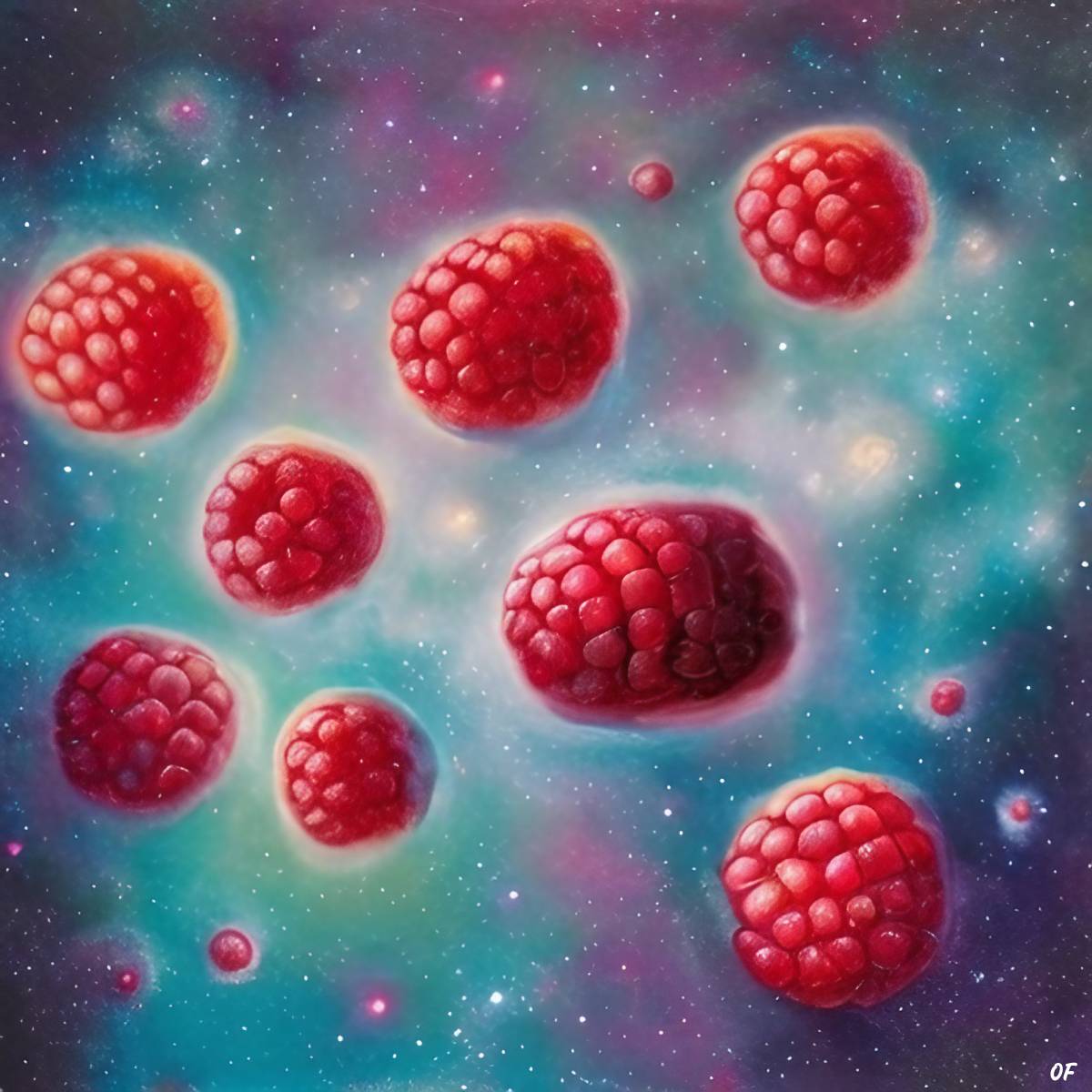What do raspberries, rum, and barbecued meat all have in common? According to scientists, those just might be the flavors of outer space.
You’d be forgiven for thinking that space tastes like chocolate, since the words “taste” and “space” probably conjure up the image of a Milky Way bar for most of us. But, unsurprisingly, this isn’t actually the case. So what does space taste like? One giant dust cloud? The answer is a little more exciting than that.
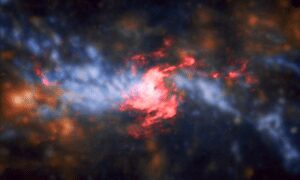
The science behind flavor
First things first, what does it mean to taste something? The sensation of taste is actually quite complex. Food theory offers us some answers: when different molecules bind chemically to receptors on the cell surface of taste buds, we experience different flavors. Flavor perception is closely linked to the sense of smell, which arises by a similar process in the nose. But flavor cannot exist in a void—for space to have a taste, there need to be molecules floating about, just as there are molecules in our air and food. And there are! Through the hard work of astronomers and astrochemists, many different chemicals have been identified in our galaxy and beyond.
Deep-space raspberries?
Astronomers are constantly trying to work out the composition of space in the quest to find out more about the building blocks of the universe, and to determine whether life could exist elsewhere. In 2009, scientists at the IRAM telescope in Spain were scanning the vast dust cloud Sagittarius B2 for amino acids, a crucial component of life as we know it, when they happened upon a very different discovery: a substance called ethyl formate. This is one of the chemicals responsible for giving raspberries their taste.
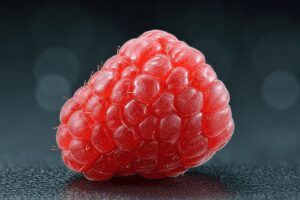
So a dust cloud near the center of the Milky Way tastes like… raspberries. Believe it or not, it’s true! Ethyl formate is an ester, a type of organic molecule that gives fruits their aromas. Not only that, but ethyl formate has a pleasant odor of rum, making Sagittarius B2 smell perhaps like a raspberry mojito. Definitely not the first thing that comes to mind when you think about outer space!
Who cares about ethyl formate?
Aside from being interesting because you can fantasize about the taste of the universe, these findings are fascinating in their own right in terms of the quest for scientific knowledge. If complex organic molecules like ethyl formate are just floating around out there, then amino acids might be, too—and where there are amino acids, there might be life. That strange raspberry taste could be a sign we aren’t alone in the universe.
What do things taste like in space?
There’s another way to frame the question of what space tastes like—how does space affect your sense of taste? When flying on an airplane, you might have noticed that things seem more muted the higher you go, and that trend continues all the way off this planet. Astronauts often find that everything tastes a bit bland when they’re up there. Some find that they hate things they usually love, and for others, it’s the opposite. The exact reason for this is unclear, but may be related to “stuffy head” syndrome—the accumulation of fluid in the head when a person is in microgravity. On the other hand, astronaut food might just be bland and monotonous!
Surely astronauts at least know what space smells like?
Suppose you were to stick your head out into the abyss for a whiff of the universe, without bothering to put on a spacesuit first. Space is a lethal place, so you would die quickly from exposure to vacuum, lack of oxygen, and/or extreme temperatures—you wouldn’t be able to smell anything, even if your nose did somehow function in the airless (but not quite empty) environment. Astronauts do smell things from outside their vessels, however. When they return from their spacewalks, smells seem to cling to the fabric. There have been numerous reports that space smells like a “seared steak”, with other comparisons to gunpowder and sulfur. Not quite as palatable as raspberries or rum…
Stellar barbecues
Researchers have suggested that the reason for the smell is chemical reactions occurring when single atoms of oxygen (highly unstable), found in space, react with molecular oxygen (O₂) in the oxygen-rich interior of the space station. This oxidation reaction leads to the formation of ozone (O₃), which has a characteristically acrid scent. You’d probably recognize it as the smell of a printer after it’s been going for a few minutes.
An alternative explanation? The smell may derive from polycyclic aromatic hydrocarbons, chemicals released from dying stars. These would interact with the air inside the spacecraft to produce that mysterious cosmic tang. Beyond just giving space an interesting smell, these organic molecules could be important as a starting material for organic compounds, and eventually life.
Does the Moon taste like cheese?
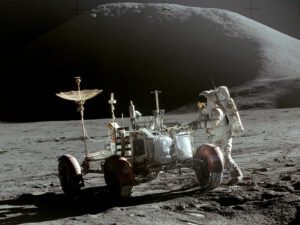
Unfortunately, there seems to be no evidence of any cheesy molecules on the Moon. The lunar surface is a barren, rocky rocky surface with few organic substances of any kind. However, when the Apollo moonwalkers tracked dust back into their landers, they reported a gunpowder smell similar to what astronauts have observed in low Earth orbit. The reason for this is unclear; lunar dust is mostly metallic and silicate in composition, nothing at all like actual gunpowder. However, it may have to do with atoms of hydrogen, helium, and other gases, which would have been deposited on the Moon by solar wind, trapped in its soil, and then released again upon contact with air inside the lander. According to Gary Lofgren of NASA’s Lunar Sample Laboratory, this could create a variety of interesting smells.
Moon dust is also notoriously nasty, abrasive stuff to handle. Without any water or air to grind it down, it is incredibly sharp, like ground-up glass, and it caused serious bouts of hay fever for the Apollo astronauts—don’t go around sniffing it!
How can you get a taste of space?
Space great for marketing food, from dehydrated “astronaut meals” to the name of the Milky Way chocolate bar. Drawing from recent discoveries, a Japanese company has gone one step further and created a special blend of tea with ethyl formate—the very same stuff behind the taste of raspberries, the smell of rum, and the big dust cloud at the center of the galaxy. They gave it a simple but apt name: “Space Tea.”
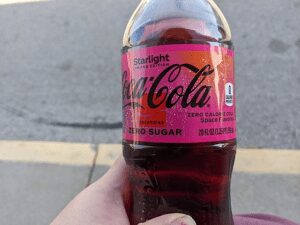
More recently, Coca Cola has hopped on the bandwagon with their Coca Cola Starlight. This drink, “inspired by space,” had a limited run in 2022, promising “additional notes reminiscent of stargazing around a campfire, as well as a cooling sensation that evokes the feeling of a cold journey to space.” What exactly that meant was unclear; the exclusive drink left people scratching their heads as to what on Earth (or rather, off Earth) it was supposed to taste like. Impressions ranged from cotton candy to mint. Coca Cola is notoriously secretive about its ingredients, so we probably won’t find out whether there was any ethyl formate kicking about in there.
In any case, the majority of us won’t get to sample the flavor of an interstellar cloud, or catch a whiff of seared steak after a spacewalk—so the next best thing might be to go down to your local farmer’s market, and pick up some raspberries for an authentic space taste.

